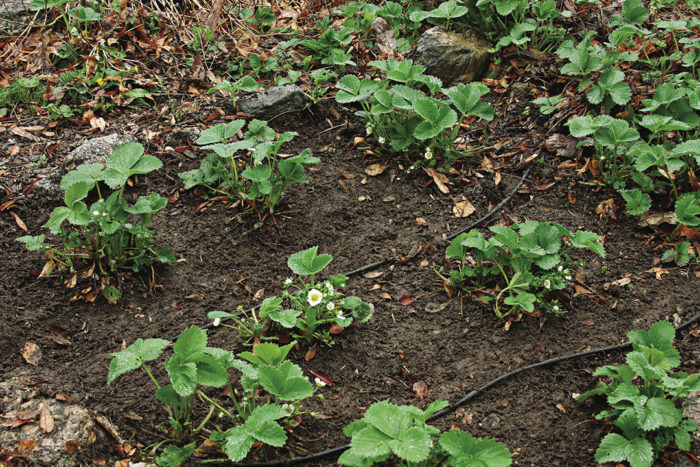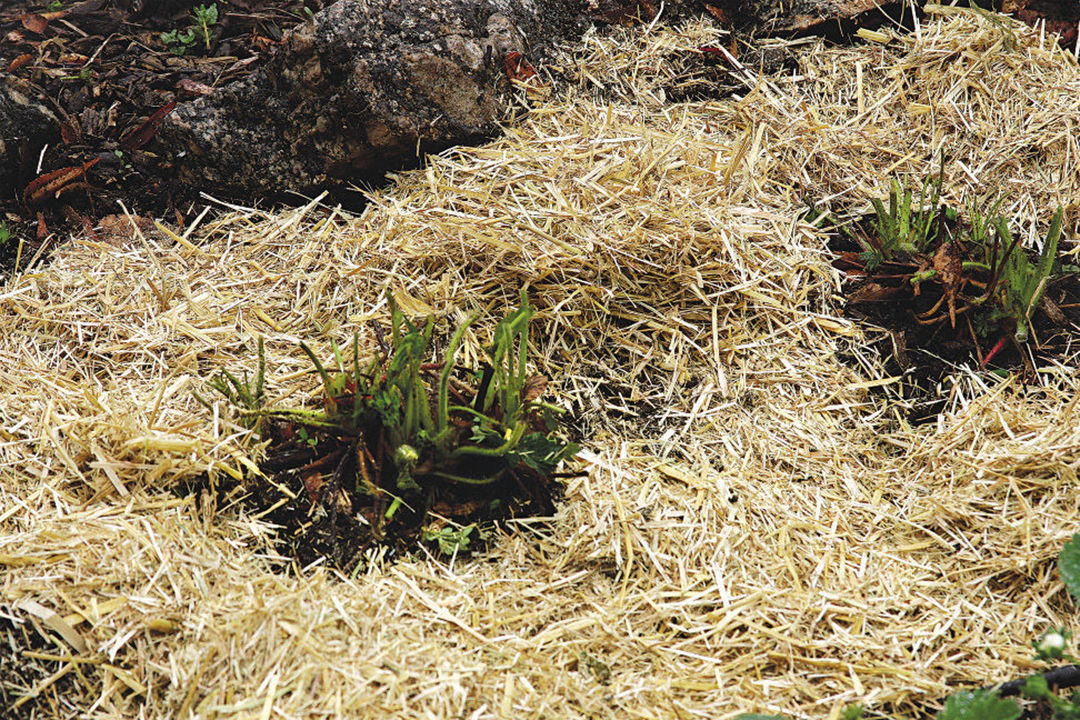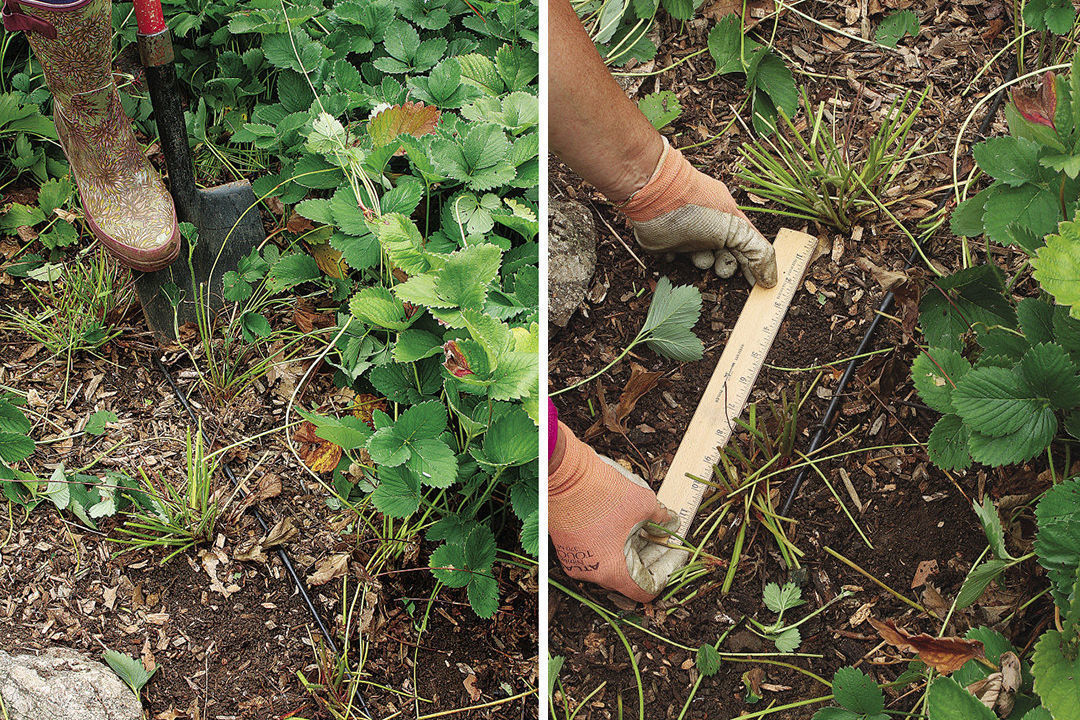Rejuvenate Your Strawberry Patch
A little yearly maintenance ensures healthy plants and a steady harvest

There is nothing quite like a warm strawberry picked ripe from your own garden, but not everyone has success with strawberry plants every year. Sure, plunking a strawberry plant in the ground is easy enough, but the rampant growth that follows after the first year can be overwhelming. Renovating—or rejuvenating—a strawberry bed will not only keep that growth in check but also help your plants produce for several years.
Renovating might sound onerous, but it simply means thinning, fertilizing, and remulching plants. You ideally want to renovate within two weeks of the last flush of berries to protect plants from developing pests or diseases in the thick foliage and to promote the development of newly renovated plants. If you have many long rows of berries, you can make short work of the first step by using a lawn mower. But most home gardeners grow strawberries in raised beds or they use the hill method (simply allowing the foliage of the berries to form hills). This requires a little more hands-on attention. Still, it is a relatively easy chore that is worth the small investment of time.
Step 1: Cut back plants within two weeks of harvest
|
|
|
Once the last harvest is finished (by late June or July for June-bearing berries, and late summer or early fall for everbearers), clear away mulch left over from the season. Using pruners, hedge clippers, or shears, cut back all the plants to a height of 2 inches (above right). Cutting the plants below 2 inches might harm the crown of the plant from which the leaves and next years’ flowers grow. Though it might seem counterintuitive, cutting strawberry foliage after harvest does not harm the plant; the plants will put forth plenty of new growth after renovation and before next year’s harvest.
Step 2: Remove plants that look thin or weak
Assess the plants by looking for the strongest performers. These will be the plants with the healthiest and heaviest growth. Remove thin or weak plants. Leave about 1 foot between plants to allow them room to grow.
Step 3: Clean the bed, and feed the remaining plants
Clean the area of all pruned and cut plants that might harbor pests or diseases developed during the season. Spread a balanced fertilizer around the newly renovated plants. Renovated strawberries need a balance of nutrients during growth to develop a strong root system and to produce a greater amount of fruit. Add a 1-inch-deep layer of compost to the bed to improve the health of the soil, and water it in.
Step 4: Apply a new layer of mulch

Apply a 2-inch-deep layer of fresh straw mulch around plants to inhibit weeds and retain moisture for the remainder of the season. Fresh mulch is best unless you are certain your old mulch is free of pests and diseases. Continue to water once a week through fall to encourage buds to form and for a better yield the following year. Strawberries like to be watered deeply during the growing season. After the first frost, cover the crowns of your plants with a thick layer of straw to protect the plants from heaving and thawing over winter. When temperatures start to warm up in spring, pull that straw back to allow the plants to grow fully.
That’s all there is to it. A little maintenance each year after harvest will make your strawberry plants work harder and longer for you, producing more plentiful and healthier fruit. And what could be sweeter than that?
June-Bearing vs. Everbearing Berries
Generally speaking, garden strawberry plants fall into two camps: June bearers and everbearers. The differences lie in how many berries you want and how often you want them.

June bearers provide instant gratification
If you want to be in strawberry heaven for about three weeks, then June-bearing strawberries are your best bet. They make a splash early in the season and then close up shop. The actual month of harvest might be earlier in warm climates, where they can be picked in March or April. June is the month in which they typically produce in colder climates.
Everbearers prove that slow and steady wins the race
If you’d rather pick berries throughout summer, then everbearers will give you the successive crops you crave. Older, heirloom varieties prefer long days and proffer two small crops: one in early summer and another in late summer. New varieties and cultivars don’t react as much to daylight levels and, thus, are called “day neutral”; they typically provide three small crops, some starting before June and persisting into late summer or a warm fall.
You are, fortunately, not forced to choose between these two types. Why not grow both in the same patch for a continual supply of fruit?
Charlotte Germane formerly worked for Peaceful Valley Farm and Garden Supply in Northern California, where she educated the public about the best practices for growing berries organically. She is currently the digital communications manager for the American Horticultural Society.
Photos, except where noted: Brittany Carlson









Comments
Log in or create an account to post a comment.
Sign up Log in